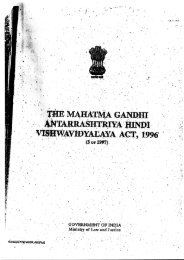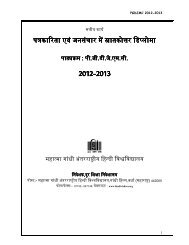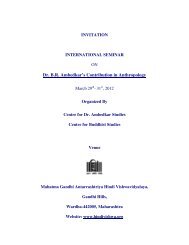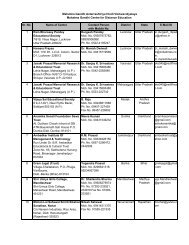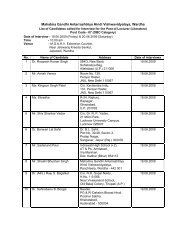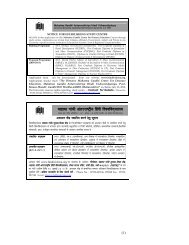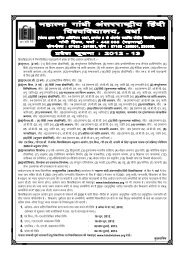Mamta Kalia
Mamta Kalia
Mamta Kalia
You also want an ePaper? Increase the reach of your titles
YUMPU automatically turns print PDFs into web optimized ePapers that Google loves.
things” did happen in the colonial period?<br />
What even more “Odd things” are<br />
happening today? What is the fate of<br />
translation in the “global village”? How<br />
does translation relate to the posts of<br />
post–colonial and post-modern? To tackle<br />
these issues, it would do good to<br />
problematize and historize translation<br />
and do so fast so that not translational<br />
“indologists” should arrive, and theories<br />
trickle to us manufactured in Paris and<br />
sent to New York, (to borrow a phrase<br />
from Edward Said).<br />
Translation “in theory”<br />
The etymology of “theory” goes back<br />
to the greek word “thea” “meaning”<br />
“vision”. Thus the idea is basically “to<br />
see”. And this vision cannot be just<br />
monotiered . Theory has to see and<br />
question the prevalent modes of thoughts<br />
and practices, as well as see “beyond”<br />
and “seek” what alternatives are out<br />
there. Theory is “the critique of<br />
established practices and the beliefs and<br />
values that justify this practice and<br />
second, the inspection of new theories<br />
and forms of practice that get proposed<br />
as substitutes for what has formerly<br />
been in place …….it remains skeptical<br />
if also hopeful about alternatives for<br />
the future. Thus theory is simultaneously<br />
a connection to and a disjunction from<br />
the temporal. Even the Hindi word for<br />
theory “Siddhant” (Siddha + Ant) speaks<br />
of an end (‘ant’) which is not here, but<br />
desirable, to be strived for (siddha).<br />
Translation in theory first of all leaves<br />
the simplified guise of being just a<br />
150 :: April-June 2010<br />
“linguistic process”. Earlier any study<br />
of translation was pursued under either<br />
of two different subjects or disciplineslinguistics<br />
and comparative literature.<br />
Translation was seen as a sub-section<br />
of linguistics, on the basic assumption<br />
that it was a “negotation, a transaction<br />
between two languages”. Thus the<br />
definitions like- “Translating consists in<br />
producing in the receptor language the<br />
closest natural equivalent to the message<br />
of the source language first in meaning,<br />
secondly in style” (Nida). J.C. Catford’s<br />
book “A linguistic theory of translation:<br />
An essay in Applied Linguistic” (1965)<br />
was perhaps the last major work written<br />
on this premise, in which he defines<br />
translation as comprising, ‘a substitution<br />
of TL (i.e Target language) meanings for<br />
SL (i.e. Source language) meaning.’ He<br />
also explains translation as “the<br />
replacement of textual material in<br />
language by equivalent textual material<br />
in another language.” But still we can<br />
see the shift from syntactic to semantic<br />
equivalence.<br />
But gradually it was seen that language<br />
was just a part of the big picture called<br />
culture. Language is in fact, a carrier<br />
of the culture. Whole chapters in<br />
traditional translation text books were<br />
devoted to discuss the “cruxes of<br />
translation” i.e. the items which proved<br />
particularly, tricky to “translate, often<br />
described as being “culture specific” for<br />
example words like kurta , ganga –nahana,<br />
maya, payal, dupatta etc. Then the<br />
realization grew that not only these so–




